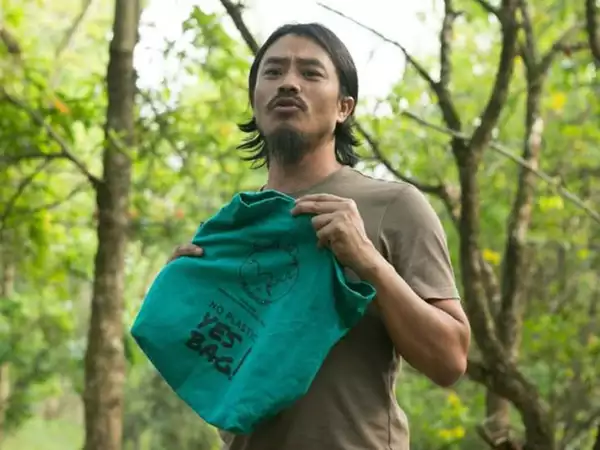
IMPHAL: At a time when global warming and climate change are dictating geopolitics, 45-year-old Moirangthem Loiya from Manipur comes across as a leading light. For the last 18 years, Loiya, a resident of Uripok Khaidem Leikai in Imphal West, has been protecting nature and fighting deforestation. He is responsible for replanting a forest named Punshilok, meaning ‘Spring of Life’. Punshilok is a living testament to his tireless efforts to protect nature and fight pollution.
As a child, Loiya often visited the lush green Koubru peak in Senapati district, Manipur. But in 2000, after finishing college, he went back and couldn’t believe his eyes — what was once a lush green peak was now devastated.
Determined to bring the greenery back, around 2002, Loiya started looking for land to plant trees. His search, guided by a local, took him to the Maru Langol hill range, the place where his efforts to build a forest took shape. The place where the local guided him did not have even a single tree as it had been burnt down by locals for rice cultivation.
Loiya left his job as a medical representative, packed some clothes and food and started living in Punshilok in a small hut he built himself. He lived there for six long years, toiling alone planting bamboo, oak, ficus, magnolia, teak, and jackfruit trees among others.
Initially, Loiya purchased seeds of only three tree varieties. With the help of a few friends and volunteers, he cleared the weeds, and started planting them. The vegetative growth was quick because of a natural spring in the area — one that has historically been revered by the locals.
So was the government okay with Loiya’s efforts, particularly since he was working on forest land that comes under the State forest reserve region? Nandeibam Mobi Singh, range forest officer (RFO), says, “Any sort of construction inside the forest reserve region would be considered an illegal encroachment, but since Loiya was acting as a helping hand in preservation and creating a green landfill of the forest cover, the initiative was not considered an illegal act.” In fact, the State forest department demolished many illegal houses built by local people around the area to protect the forest.
“Article 51-A (g) of the Indian constitution clearly imposes a duty on every citizen to protect the environment, including forests, lakes, rivers and wildlife, and to have compassion for living creatures. Loiya and his organisation are adhering to this article of the constitution by being responsible citizens of the country,” explains Singh.
In
2003, Loiya and his friends established the Wildlife And Habitat Protection
Society (WAHPS) which along with volunteers looks after the natural wealth of
Punshilok.
Today, Punshilok forest area covers around 300 acres. It is rich in flora and
fauna, with a large variety of trees, shrubs and medicinal plants getting a new
home on the hilltops. Around 250 species of plants and around 25 species of
bamboo grow here. The green cover is also home to a variety of birds, snakes
and wild animals like barking deer, pangolin, porcupine, mongoose, leopard cat
and deer, among others.
The
locals too can feel the difference the forest has made to the climate over the
past decade. “Temperature has gone down
considerably and chirping of birds can be heard all year round,” says
Kunjaksor, a native of Imphal.
Loiya and volunteers with the help of the forest department have saved many
parts of the forest from fire and indiscriminate cutting of trees and poaching
has stopped.
“Since the place caught people’s attention, a large number of visitors, including locals and foreign nationals, have visited the place to explore its breathtaking beauty of the forest,” said Loiya.
“Activist Irom Chanu Sharmila visited Punshilok in September 2016 after she ended her 16-year fast. She planted a wild mango sapling in Punshilok,” he recounts, beaming with pride.
“The speedy growth of the forest is due to regular maintenance activities of WAHPS and State forest department. Both the associations have put great efforts in the past to put out forest fires,” Mobi added.
For Loiya, Punshilok is a life-long mission. To earn a living, Loiya works as a pharmacist in his brother’s medical store and does organic farming, but his life mission is to plant more trees and continue creating more forest land. Loiya says, “I consider myself a painter. Other artists use canvas, brush and colour to paint, but I used the face of hills as my canvas and planted trees and flowers to paint. It has taken a lifetime to draw this – it is living art.”
TIMESOFINDIA.COM | Aug. 26, 2019
More at https://timesofindia.indiatimes.com/city/imphal/manipur-how-one-man-planted-a-300-acre-forest-near-imphal/articleshow/70838384.cms
